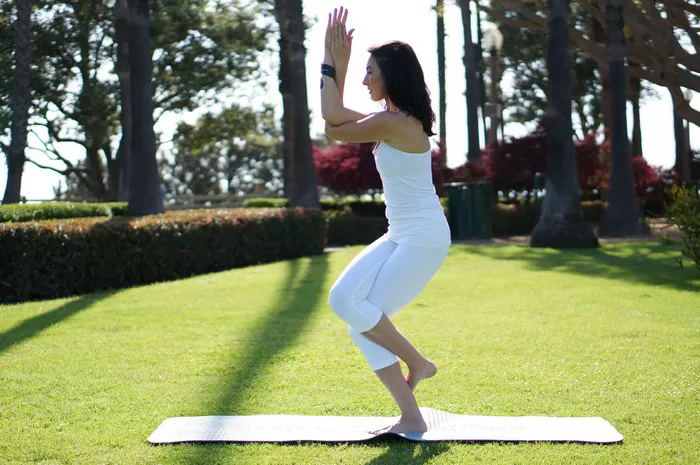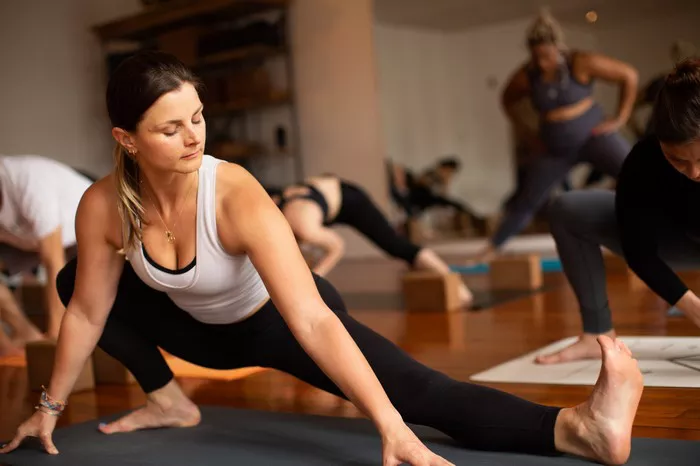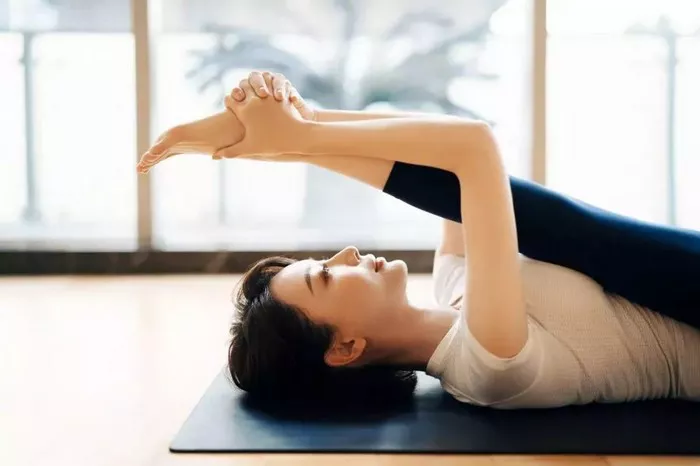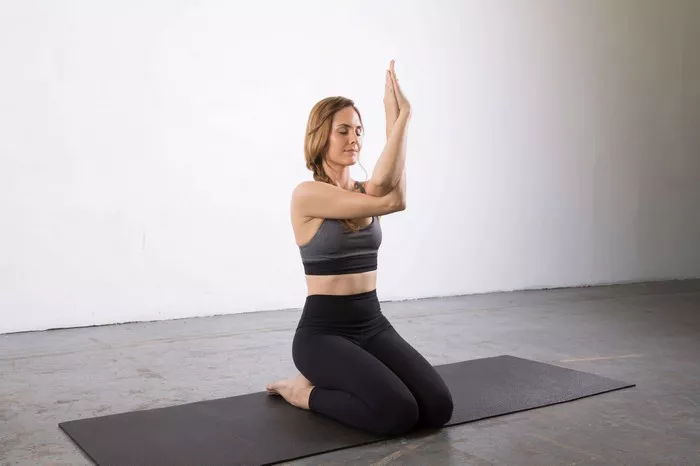Frozen shoulder, medically termed adhesive capsulitis, is a debilitating condition characterized by pain and stiffness in the shoulder joint, often limiting mobility and affecting daily activities. While conventional treatments such as physical therapy, medications, and injections may offer relief, emerging evidence suggests that yoga can be a beneficial complementary therapy for managing frozen shoulder. In this article, we delve into the mechanisms underlying frozen shoulder, explore the therapeutic potential of yoga, and discuss specific yoga poses and practices that can help alleviate symptoms and improve shoulder function.
Understanding Frozen Shoulder
Before delving into the role of yoga in managing frozen shoulder, it’s crucial to understand the condition itself. Frozen shoulder typically develops gradually and progresses through three distinct stages:
1. Freezing Stage: During this initial phase, patients experience increasing shoulder pain and stiffness. Simple movements such as reaching overhead or behind the back become challenging.
2. Frozen Stage: In the frozen stage, shoulder stiffness becomes more pronounced, severely limiting range of motion. Pain may persist but often becomes more manageable compared to the freezing stage.
3. Thawing Stage: As the name suggests, the thawing stage involves a gradual improvement in shoulder mobility and a reduction in pain. However, complete resolution can take months to years.
The exact cause of frozen shoulder remains unclear, but certain risk factors such as age, gender (more common in women), diabetes, and prior shoulder injury or surgery may predispose individuals to develop this condition. While conventional treatments aim to reduce pain and restore shoulder function, they may not always address the underlying issues contributing to frozen shoulder.
The Role of Yoga in Frozen Shoulder Management
Yoga, an ancient practice originating from India, encompasses a combination of physical postures, breathing exercises, and meditation techniques. Beyond its well-known benefits for stress reduction and flexibility, yoga has gained recognition as a therapeutic tool for various musculoskeletal conditions, including frozen shoulder. Several mechanisms underlie the potential efficacy of yoga in managing frozen shoulder:
1. Stretching and Strengthening: Yoga poses (asanas) involve gentle stretching and strengthening of muscles surrounding the shoulder joint. These movements help improve flexibility, reduce stiffness, and enhance overall shoulder function.
2. Mind-Body Connection: Yoga emphasizes the mind-body connection, encouraging practitioners to cultivate awareness of bodily sensations and movements. This heightened awareness can facilitate better movement patterns and posture, reducing strain on the shoulder joint.
3. Stress Reduction: Chronic pain conditions such as frozen shoulder are often associated with increased stress and tension. Yoga incorporates relaxation techniques such as deep breathing and meditation, which can help alleviate stress and promote pain relief.
4. Joint Mobilization: Certain yoga poses involve controlled movements that promote joint mobilization, aiding in breaking down adhesions and restoring normal range of motion in the shoulder.
Yoga Poses for Frozen Shoulder
While yoga offers a wide array of poses targeting various muscle groups and joints, individuals with frozen shoulder should approach their practice with caution and consult with a qualified yoga instructor or healthcare provider before beginning. Here are some yoga poses that may benefit individuals with frozen shoulder:
1. Garudasana (Eagle Pose): This pose involves crossing the arms and legs in a way that stretches the shoulders and upper back, promoting mobility and flexibility in the shoulder joint.
2. Gomukhasana (Cow Face Pose): Gomukhasana stretches the shoulders and chest, helping to release tension and improve range of motion in the shoulder.
3. Ardha Matsyendrasana (Seated Twist): Seated twists gently mobilize the spine and shoulders, promoting flexibility and relieving stiffness.
4. Adho Mukha Svanasana (Downward-Facing Dog): Downward-Facing Dog is a foundational yoga pose that stretches the shoulders, arms, and back, while also strengthening the muscles surrounding the shoulder joint.
5. Bhujangasana (Cobra Pose): Cobra Pose helps open up the chest and shoulders, counteracting the forward-slumping posture that often accompanies frozen shoulder.
Incorporating Yoga into Frozen Shoulder Treatment
When incorporating yoga into a treatment plan for frozen shoulder, it’s essential to prioritize safety and listen to your body. Here are some tips for integrating yoga practice into your routine:
1. Start Slowly: Begin with gentle, beginner-friendly yoga poses and gradually progress as your flexibility and strength improve. Avoid forcing or overexerting the shoulder joint.
2. Modify as Needed: Modify yoga poses to accommodate your individual range of motion and comfort level. Use props such as blocks or straps to support your practice.
3. Focus on Breath Awareness: Pay attention to your breath during yoga practice, using deep, diaphragmatic breathing to enhance relaxation and reduce tension in the shoulders.
4. Consistency is Key: Consistent practice is essential for reaping the benefits of yoga. Aim for regular sessions, even if they’re short, rather than sporadic, intense workouts.
5. Seek Guidance: Work with a qualified yoga instructor who has experience working with individuals with shoulder injuries or limitations. They can provide personalized guidance and adjustments to ensure safe and effective practice.
Conclusion
While frozen shoulder can pose significant challenges to mobility and quality of life, integrating yoga into a comprehensive treatment plan may offer valuable benefits. By combining gentle stretching, strengthening, and mindfulness techniques, yoga can help alleviate pain, improve flexibility, and promote overall shoulder function. However, it’s essential to approach yoga practice mindfully, prioritizing safety and listening to the body’s signals. As with any new exercise regimen, individuals with frozen shoulder should consult with their healthcare provider before beginning a yoga practice to ensure it’s appropriate for their condition. With patience, consistency, and proper guidance, yoga can be a valuable tool in the journey towards frozen shoulder recovery and improved well-being.
FAQs:
What should you not do with a frozen shoulder?
With a frozen shoulder, it’s crucial to avoid activities that exacerbate pain or further restrict shoulder mobility. High-impact exercises, heavy lifting, and sudden, jerky movements should be avoided. Additionally, refrain from pushing through intense pain during daily activities, as this can worsen inflammation and discomfort. Gentle, controlled movements within your pain-free range of motion are preferable to prevent aggravating the condition.
What are the best exercises for frozen shoulder?
The best exercises for frozen shoulder focus on gentle stretching and strengthening of the shoulder muscles. Range-of-motion exercises such as pendulum stretches, wand exercises, and wall climbs can help improve flexibility. Additionally, shoulder stretches like the cross-body reach and towel stretch can alleviate stiffness. Gradually incorporating resistance exercises with resistance bands or light weights can also aid in strengthening the muscles surrounding the shoulder joint.
What is the fastest way to get rid of a frozen shoulder?
While there’s no overnight solution for frozen shoulder, several strategies can expedite recovery. Consistent, gentle stretching and range-of-motion exercises can prevent further stiffness and improve mobility over time. In some cases, physical therapy or corticosteroid injections may be recommended to alleviate pain and inflammation. However, it’s essential to consult with a healthcare professional to determine the most suitable treatment approach for your specific condition. Additionally, maintaining a healthy lifestyle with adequate rest, nutrition, and stress management can support overall recovery from frozen shoulder.
























